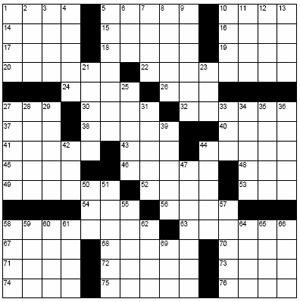
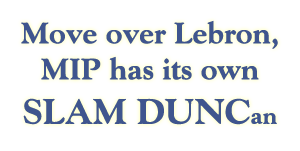
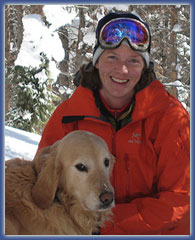
Colleen Duncan has accepted an Assistant Professor position in the department effective Jan 2. A native of the great white north, Colleen did her DVM training and MSc degree in Saskatoon, SK; obviously making her an expert in frozen sections! When offered a spot in the PhD/anatomic pathology residency in Colorado however, she happily relocated to a more temperate climate. At CSU she continued to study epidemiology in conjunction with pathology, hoping that someday this combined skill set would facilitate her career goal of rappelling into a disease outbreak, in full biosaftey gear, to conduct field posts-mortems and identify risk factors necessary to curtail the epidemic. Should this opportunity present itself in the coming months we anticipate that the royalties from the subsequent movie contract could provide sufficient funds to bail CSU out of the current crisis. Until then however, Colleen is happy to be working in the diagnostic lab, getting involved in some awesome collaborative research and skiing backcountry with her old dog Harley.
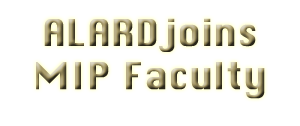
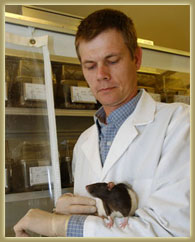
There will be another new face at our monthly MIP faculty meetings. No, it's not Senator Wayne, but rather Lon Kendall, the Associate Laboratory Animal Resources Director, has accepted an assistant professor appointment with MIP. He graduated with his DVM from CSU in 1994, completed his residency in Laboratory Animal Medicine and PhD in Veterinary Pathobiology in 2000 from the University of Missouri. Upon completing his degree, he took a position at UC Davis where he worked in the Comparative Pathology Laboratory providing research support and rodent diagnostic services. He eventually became the Director for the Center for Laboratory Animal Science overseeing the animal care program.
Lon's research interests are in infectious disease and host immune response. The Rocky Mountain RBL, the ability to be closer to his family, and his affinity for snow prompted the move back to CSU.

Schenkel's Piece of the PECAM Pie
M.A. Seidman, T.W. Chew, A.R. Schenkel, and W.A. Muller. PECAM-Independent Thioglycollate Peritonitis is Associated with a Locus on Murine Chromosome 2. PloS ONE 4: e4136 (January 2009)
That localized swelling that often happens when you get a nasty cut is referred to as inflammation. In addition to the movement of fluid into injured tissues, a key step in inflammation is the movement of white blood cells out of the circulation into the site. This process, called diapedesis or transendothelial migration, is initiated and mediated by a series of adhesion molecules. One of these, called PECAM, for Platelet / Endothelial Cell Adhesion Molecule (no relation to what you order the CSU mascot to do when you need material for urinalysis), is considered pivotal for diapedesis. This conclusion was largely reached based on experiments in which PECAM was sequestered by antibodies or decoy molecules.
So ~10 yrs ago, a group of researchers made a transgenic mouse (inbred strain B6) that contained no functional PECAM gene. They expected to see dramatic effects on white blood cell migration to sites of inflammation. Instead they saw only very subtle defects. Akin to that classic Bud commercial, a group of scientists was left scratching their collective heads saying Wazzzzzup????
Here's where the recent publication by Alan and his collaborators at Cornell comes in. Turns out that the lack of an effect of knocking out the PECAM gene is only observed in the B6 strain of inbred mice. All of the other strains that have been examined to date require an available PECAM molecule for the normal movement of monocytes and neutrophils across blood vessels. So Alan et al tried to turn the lemon of a result obtained with the PECAM knockout transgenic B6 mouse strain into lemonade so to speak. They set out to discover why the heck the B6 strain behaves differently than other mice to gain novel insights into the process of transendothelial migration.
Through crossing B6 strain mice with other PECAM-responsive strains and analyzing the data obtained using a mathematic approach called quantitative trait locus (QTL) mapping (next time you run into Bill Black ask him to explain it to you), Alan and colleagues came to the conclusion that there is a gene that explains why B6 mice are not affected by a PECAM knockout at the proximal end of chromosome 2 that is inherited in an autosomal dominant fashion and likely to be imprinted (in other words its expressed differently depending on whether you inherit it from Mom or Dad). That is a very important finding which significantly focuses the hunt for the gene responsible for the PECAM independence of transendothelial migration. The best candidate gene in this region - the C5 complement component which is known to play a role in inflammation and membrane attack complex formation - does not appear to be the key gene (are you getting the feeling like me that nothing is simple with PECAM?..). So Alan et al's attention is now turned to other candidate genes in that region of chromosome 2 including COX1 and prostaglandin synthases, all of which are known to play some role in inflammation.
So why did we choose this article as out paper of the month? First it represents a major step in our opinion to a new and likely novel insight into fundamental aspects of the regulation of cell migration during inflammation. This could lead to new therapies for inflammation-associated diseases. Second, the paper represents a great demonstration of the power of modern mammalian genetic analysis applied to an interested biological problem to flesh out the molecular mechanism. Finally, we were very impressed that the paper got accepted into PLOS One in a mere 16 days, even though it was submitted over the Christmas/New Years holidays. Therefore it's a great way to remind MIP students and postdocs that, believe it or not, sometimes reviewers don't make you jump through an ungodly number of hoops prior to publication in a top journal.
In the News...
- The Carol Blair-led AIDL group was highlighted in the February 13 issue of the Coloradoan in an article entitled, "Research on mosquitoes could lead to virus control"
 MIP Publications Late
January - Early February 2009
MIP Publications Late
January - Early February 2009
- Drum MG, Les CM, Park RD, Norrdin RW, McIlwraith CW, Kawcak CE. Correlation of quantitative computed tomographic subchondral bone density and ash density in horses. Bone. 2009 Feb;44(2):316-9.
- Eoh H, Brennan PJ, Crick DC. The Mycobacterium tuberculosis MEP (2C-methyl-d-erythritol 4-phosphate) pathway as a new drug target. Tuberculosis (Edinb). 2009 Jan;89(1):1-11.
- Farfan-Ale JA, Loroño-Pino MA, Garcia-Rejon JE, Hovav E, Powers AM, Lin M, Dorman KS, Platt KB, Bartholomay LC, Soto V, Beaty BJ, Lanciotti RS, Blitvich BJ.Detection of RNA from a Novel West Nile-like virus and high prevalence of an insect-specific flavivirus in mosquitoes in the Yucatan Peninsula of Mexico. Am J Trop Med Hyg. 2009 Jan;80(1):85-95.
- Gafni Y, Ptitsyn AA, Zilberman Y, Pelled G, Gimble JM, Gazit D. Circadian rhythm of osteocalcin in the maxillomandibular complex. J Dent Res. 2009 Jan;88(1):45-50.
- Qiu D, Damron FH, Mima T, Schweizer HP, Yu HD. PBAD-based shuttle vectors for functional analysis of toxic and highly regulated genes in Pseudomonas and Burkholderia spp. and other bacteria. Appl Environ Microbiol. 2008 Dec;74(23):7422-6.
- Rholl DA, Trunck LA, Schweizer HP. In vivo Himar1 transposon mutagenesis of Burkholderia pseudomallei. Appl Environ Microbiol. 2008 Dec;74(24):7529-35.
- Seidman MA, Chew TW, Schenkel AR, Muller WA. PECAM-independent thioglycollate peritonitis is associated with a locus on murine chromosome 2. PLoS ONE. 2009;4(1):e4316.
- Smirnova NP, Ptitsyn AA, Austin KJ, Bielefeldt-Ohmann H, Van Campen H, Han H, van Olphen AL, Hansen TR. Persistent fetal infection with bovine viral diarrhea virus differentially affects maternal blood cell signal transduction pathways. Physiol Genomics. 2009 Feb 2;36(3):129-39.
- Spraker TR, Vercauteren KC, Gidlewski T, Schneider DA, Munger R, Balachandran A, O'Rourke KI. Antemortem detection of PrPCWD in preclinical, ranch-raised Rocky Mountain elk (Cervus elaphus nelsoni) by biopsy of the rectal mucosa. J Vet Diagn Invest. 2009 Jan;21(1):15-24.

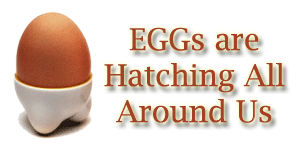
Don't worry you won't have to walking on egg shells as you traverse the hallowed halls of MIP. Equipment Governing Groups – or EGGs – are a new user committee-based concept being developed by MIP to effectively manage our equipment resources. Four EGGs are currently being set up: Microscopy (led by Mercedes Gonzalez-Juarrero), Cell Sorting/Cytometry (led by Anne Avery), Imaging Equipment (led by Carol Wilusz) and Centrifuges (led by Dean Crick). Each EGG Head is currently forming a user committee, identifying the precise high-end equipment that will be covered under each EGG, and setting up accounts and a funding plan to cover the costs associated with equipment repair and maintenance.

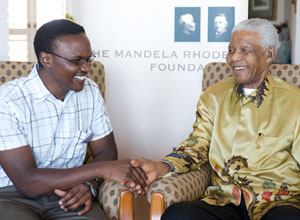
Many in the MIP department will remember the smiling face of Cornelius "Cano" Ssemakalu, a Ugandan who worked closely with Mary Ann De Groote and others in the Orme Lab in 2006-2007. Cano has received a Mandela Rhodes Scholarship for his Masters level work in South Africa. The prestigious scholarship revolves around the principles of Reconciliation, Education, Entrepreneurship, and Leadership. Cano is starting an Msc working with Vibrio cholerae. We congratulate him for the scholarship as it is well deserved for such a bright and hardworking student. In the future he is interested in pursuing a Ph.D. in the area of tuberculosis.
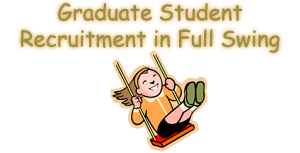
Twelve prospective graduate students from as far away as Hawaii will be visiting the department on Friday Feb 27th. They will be meeting with faculty during the day, attending the joint recruitment poster session in the afternoon and the graduate student organization is sponsoring an FAC at Coopersmith’s in the evening. More festivities are planned for Saturday morning including a tour of the RBL with Dr. Schweizer, hiking, brewery tours etc. Thanks to all of the MIP faculty, students and staff who are helping to put this together and give our visitors a taste of that legendary MIP hospitality.

Staying Alive 2009...
The 2009 edition of the MIP Movers Staying Alive team started logging their minutes and/or steps on February 2nd and will be doing so for the next 10 weeks. Prizes will be awarded to the top teams, individuals, and/or random participants at the end of the program. A big thanks to Barb Andre for coordinating the MIP Movers and encouraging everyone to get out and exercise!

The 4th annual CSU Art and Science Exhibition will be held March 6-27 in the Curfman Gallery, with the opening reception on March 6 from 4-6pm. The exhibition celebrates science-inspired art and artistically-appreciated science. The exhibition is open to all students, faculty and staff and submitted work may be in any medium. Online registration begins on Feb 6 and ends Feb 25. Log-on and register today!
Finding Art in Everyday Science:
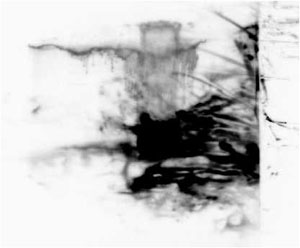
To the scientific researcher, this might appear at first glance as just another failed Western blot with a very high background due to the presence of an inordinate amount of IgG heavy chain on the gel. But if you look closely, you might see a duck hunter rising out of a black blind and pointing his long gun towards some waterfowl on the left. What do you see in this Rorschach-esque piece of data?
Upcoming Research Events:

The 10th Annual CVMBS Research Symposium will be held on Saturday, February 21 at the Ft. Collins Hilton. Between 1 and 5PM, 17 oral and 19 poster presentations will be made by MIP students and postdocs. Be sure to come out and support these MIP presentations as well as the other terrific science being done around the College. The symposium will conclude with an awards ceremony at 6:00pm.
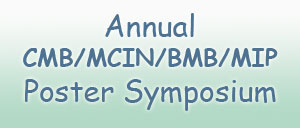
Graduate students and postdocs in all of the biological and biomedical sciences at Colorado State University will be participating in the Annual Cell and Molecular Biology and Molecular, Cellular & Integrative Neuroscience poster symposium on Friday, February 27

ATTENTION MIP UNDERGRADUATE RESEARCHERS
The CURC poster session is scheduled for Tuesday, April 21, 10:00am to 2:00pm and will feature poster presentations by undergraduate science students from all over campus.
For more information and to sign up, go to; http://curc.colostate.edu"

Information is now available on the web at the CVMBS Website. At this website, you will find the Call for Proposals information letter, as well as the CRC Face Sheet and signature page. Proposal deadline is 5:00pm on Monday, March 23, 2009.

No, this snippet does not refer to all the re-used jokes in the MIP newsletter. CSU is competing with more than 500 colleges and universities across the country in the annual collegiate recycling competition. Last year CSU clinched 2nd place in the nation - and we're aiming for the No. 1 spot in 2009. So come on MIP – PITCH IN!

The 16th ASM Conference for Undergraduate Educators (ASMCUE) is scheduled to be held in Fort Collins, May 28-31 2009. Abstract submission deadline is February 20, 2009. More information is available at the ASMCUE Website.
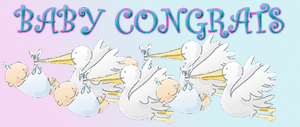
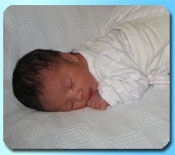
Congratulations to Libin Zhang, a postdoc in the Wilusz2 Lab, along with his wife Lu for the birth of their baby boy, Erik. Erik was born at 8:50 PM on February 12th at 5lbs 14oz and 18.5 inches.

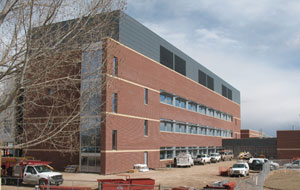
The south-facing wall.
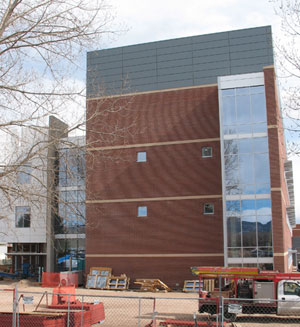
The west-facing wall
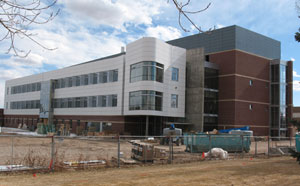
The north-facing wall

"Do not go where the path may lead. Go instead where there is no path and leave a trail. "

If you think you're having a bad day and things couldn't get any worse while writing your dissertation/grant proposal, then you haven't seen this Microsoft Word message yet (click here)
This message was something Debbie Barlin saw earlier this month while working on a grant proposal...

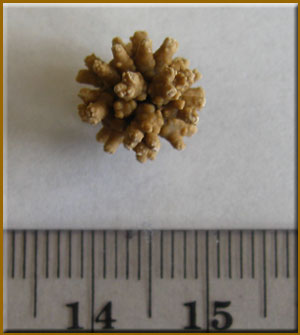
Congratulations to Abbe Ames for correctly identifying the item pictured above as a urolith bladder stone from a domestic long hair cat!
Thanks to Tammy Hess, Vicki Jones, Gary Mason and Carolyn Speshock for submitting their guesses!
Who will serve as a role model for our profession’s youth?
Where have all the heroes gone?
Look no further
We proudly present to you Episode 3 of "Captain Justice."
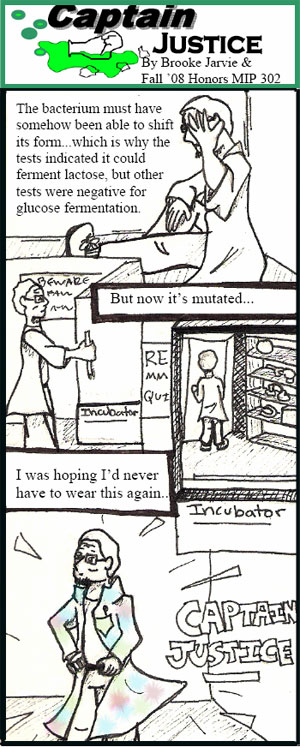
Art: Brooke Jarvie
Concept: Paul Moresco
Contributions by: Madeline Anna, Jolie Gallagher, Zarine Garcia, Eric Golike,
Katriana Popichak, Brett Rosenberg, Brice Thompson, and many others
Thoroughly chagrined role model: Pete Justice

- Looking for that Special Something?
Valentines Day may have helped you connect with that special someone, but what about that cell line, tissue, etc for your research? Don't forget that NIH/NIAID supports a number of repositories and other research resources that may be of direct benefit to MIP investigators. A complete list of these research resources can found at the NIAID Research Webpage.
- Free* Filariasis Course next month
Things getting under your skin lately? You might then be interested in attending the fourth annual NIAID Sponsored course on the Biology and Molecular Biology of Filarial Parasites held at the University of Georgia March 9-13th. The course is free, but you would have to pay for all of your travel expenses. More info can be found at http://www.filariasiscenter.org/
- How NIH Plans to Spend its $10.4 Billion Share of the Stimulus Package
$7.4 billion will go to NIH’s institutes and centers to fund previously approved grants, supplemental funding to existing programs and two–year, $500K/yr ‘special–challenge’ grants. Another $1.3 billion of the stimulus is targeted for extramural construction and equipment – so now might be a really great time to consider submitting a Shared Instrumentation Grant Application to NCRR (deadline is mid March). For more information, check out the BioTechniques article online.


| Mon | Tue | Wed | Thur | Fri |
2 |
3 | 4 | 5 | 6 Faculty Seminar - 9am - Path 103 |
| 9 | 10 Graduate Seminar - 12pm - 103 Path |
11 | 12 | 13 Faculty Seminar - 9am - Path 103 |
| 16 | 17 Graduate Seminar - 12pm - 103 Path |
18 | 19 Faculty Seminar - 12pm - Path 103 |
20 Faculty Seminar - 9am - Path 103 |
| 23 | 24 FacultFaculty Mtg - 4pm - Path 103 Graduate Seminar - 12pm - 103 Pathfont> |
25 | 26 | 27 Faculty Seminar - 9am - Path 103 |
| Mon | Tue | Wed | Thur | Fri |
| 2 |
3 Graduate Seminar - 12pm - 103 Path |
4 Microscopy Seminar - 8am - 103 Path |
5 | 6 |
| 9 | 10 Graduate Seminar - 12pm - 103 Path |
11 Microscopy Seminar - 8am - 103 Path |
12 | 13 Faculty Seminar - 9am - Path 103 |
| 16 SP B |
17 R R  |
18 I E |
19 N A |
20 G K |
| 23 | 24 Graduate Seminar - 12pm - 103 Path |
25 Microscopy Seminar - 8am - 103 Path |
26 | 27 Faculty Seminar - 9am - Path 103 |
| 30 | 31 Faculty Mtg - 4pm - Path 103 Graduate Seminar - 12pm - 103 Path |
Do you have NEWS or PICTURES you would like to share?
Send In your ideas or newsworthy items. Contributions make the Newsletter better!
